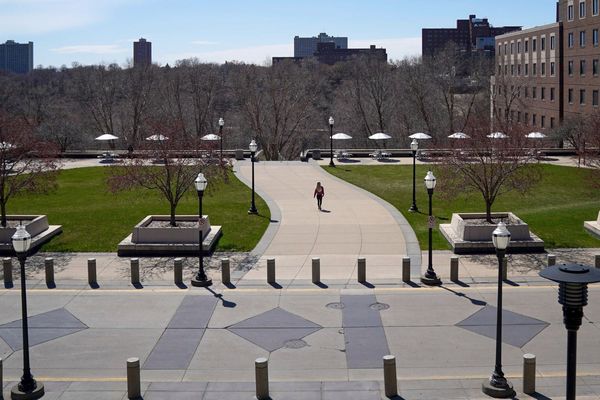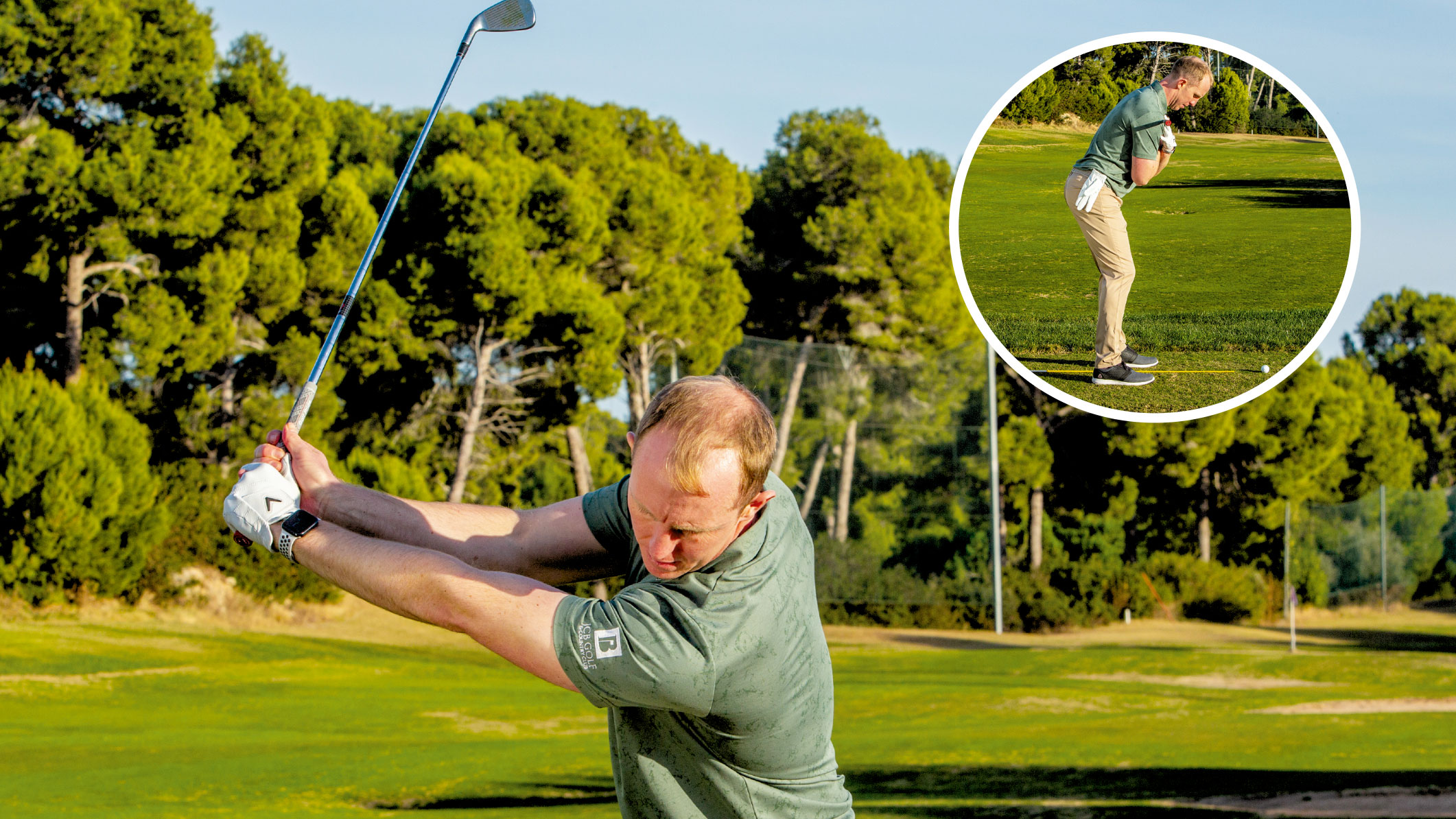
There are several key factors to consider when learning how to start the backswing in golf, especially as the combination of this and your ability to effectively initiate the downswing will ultimately dictate the outcome of your shot.
Understanding subtle aspects such as how long your backswing should be, how to avoid an overswing and how to get a straight left arm in your golf swing will help you to strike the ball better, but this deeper understanding can also help you to eliminate some of the most common swing faults at source.
In this article, Golf Monthly Top 50 Coaches John Howells and Joshua Mayo talk us through a complete guide to the backswing, while also sharing a few simple hacks that could transform the quality of your ball-striking...
What Is The Golf Backswing?
What is the backswing in golf?
The first part of the golf swing is called the takeaway, which initiates the backswing. One of the most common mistakes among club golfers, particularly high- handicappers and beginners, is there is often a lot of moving parts in the backswing. Sometimes it’s because they want to be positive and make a nice, committed swing; other times it’s because they don’t know how best to initiate the takeaway.
Find The Perfect Backswing
John Howells Backswing Drills
I used to work under Butch Harmon, who would always stress how critical the backswing is. He used to say that, as coaches, we had an opportunity to help players with their set-up and to influence their backswing. But the downswing, and where we want the club to travel through impact, is trickier as the club is travelling so quickly, particularly with stronger players.
Butch was keen on giving his players a functional-looking set-up and functional backswing, where you’ve got more time and more chance to allow them some thinking space to actually nail these positions. Here, I offer a three useful backswing drills to help you lose the faults leading to those leaky shots and reinforce some solid fundamentals...
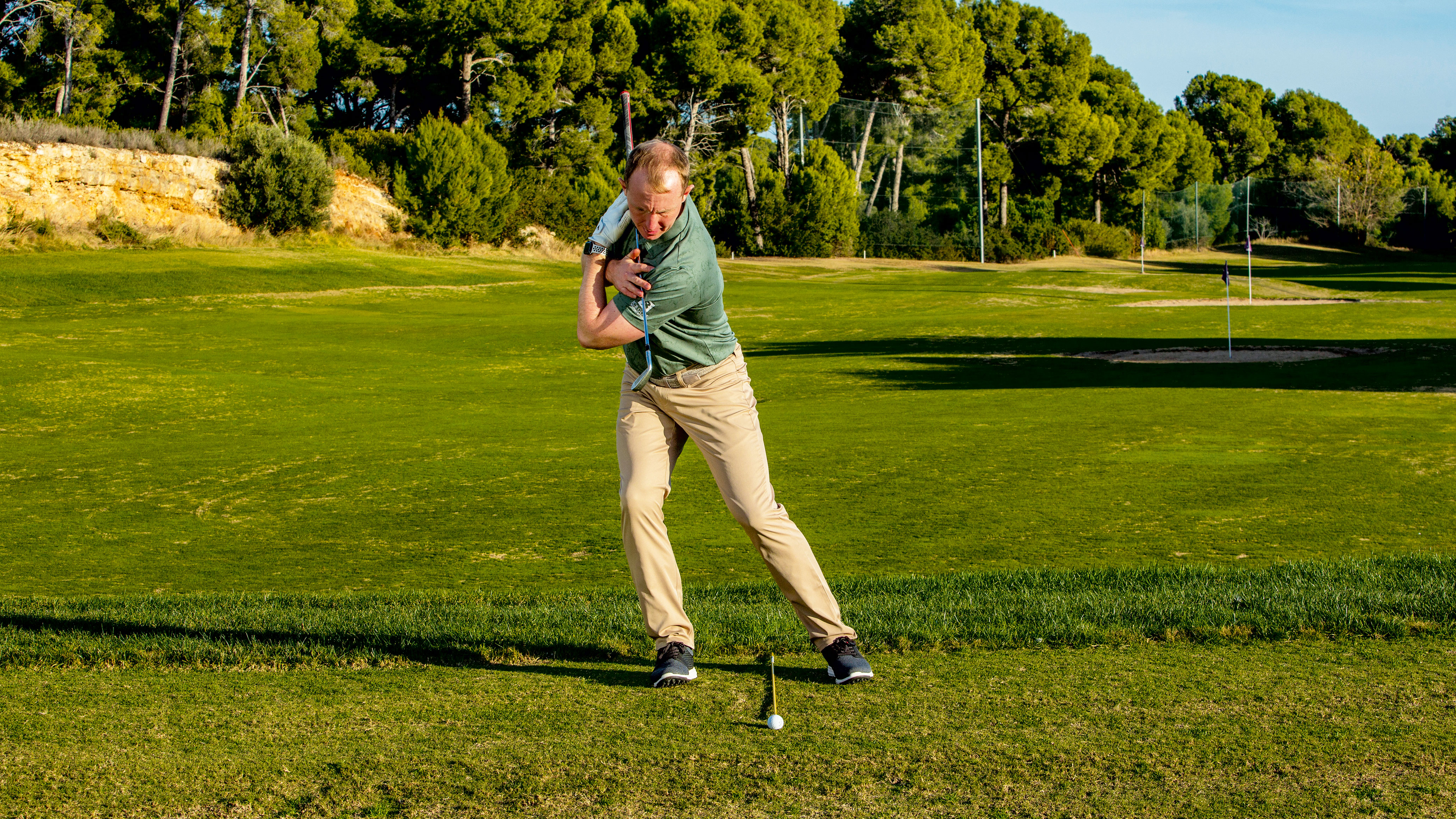
1. Glove Drill
This drill is great for those players who don’t really make a proper turn in their backswings. Potentially, they sway their hips across to their trail side on the way back and don’t really turn their hips at all. This move really lacks rotation and doesn’t lead to the most dynamic of backswings.
If this is you, what you need to try and do is raise your awareness levels by placing an object on your trail hip. In this instance, I suggest using a glove, which you just attach to the belt loop on your right hip. You want to get the feeling that, with your arms across your chest, the glove will turn behind you as much as possible in the backswing. You’re trying to move your right hip behind your body and away from the ball. This will encourage, or incentivise, your pelvis to rotate a lot more, rather than sway.
This is going to lead to a big change in leg flex. It will allow your right leg to extend slightly, with the right leg and knee straightening to really facilitate a solid backswing turn with your hips and upper body. Your left knee will move down towards the ball and, from there, you’ll then see a full backswing turn. You don’t have to hit balls doing this. You can if you want to, and it will definitely give you better low-point control in the downswing. But what you’re really focusing on is making a backswing that turns the glove behind you.
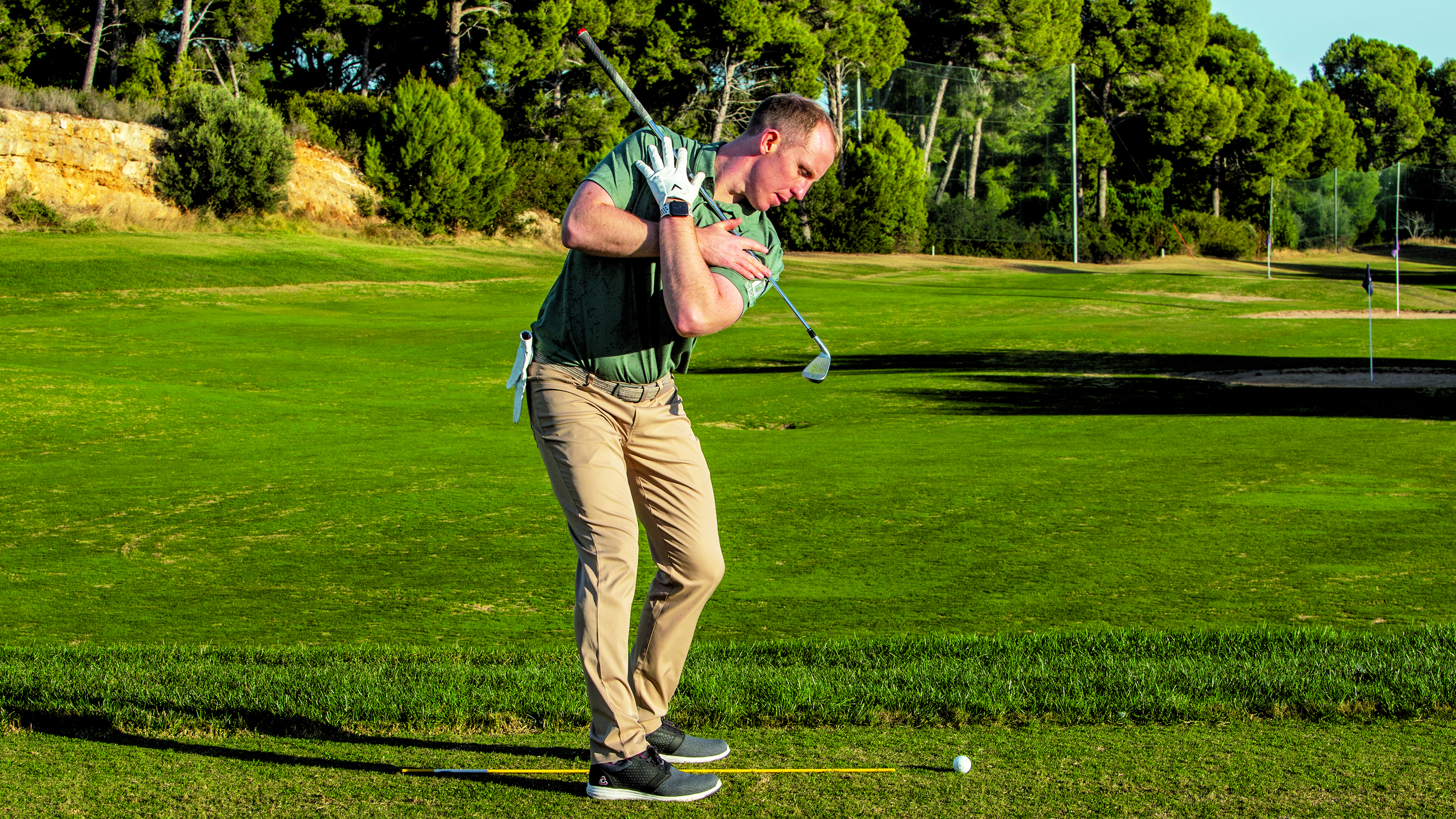
2. Lawnmower Drill
This is a drill Justin Rose uses regularly. It’s designed to help you make a smooth start to your backswing. I often see pupils who have a very snatchy takeaway. The club starts off at a rate of knots and they’re not making that movement in which the hands, clubhead and chest all move together at a one-to-one-to-one ratio.
In this drill, I want you to address the first ball, with another one placed 5-6cm behind it. Make a really calm drag away with the club before going on to hit the ball. If you can get it right in the first three feet of the takeaway, and lose that snatchy move, it will really help your rhythm and tempo. It’s great for getting your swing started in the correct way.
This is perfect for those of us who have a flat shoulder plane, which makes it very difficult to get the contact correct. You will often have to lunge down in order to get to the ball and it can also lead to you throwing the club way over the top. What I want you to do instead is feel like you’re getting one of those old petrol lawnmowers started. Put your hands down in front of you, then feel as though you’re making a backswing by trying to get the motor to fire up.
Imagine you’re pulling your right elbow 45 degrees away from the ball towards the sky behind you. Your left fist will move down towards the ball slightly and your right fist will move away as it follows the right elbow. This will ensure your shoulders turn with much more of an incline towards the ground, helping you get the club down to the back of the ball to produce penetrating strikes.
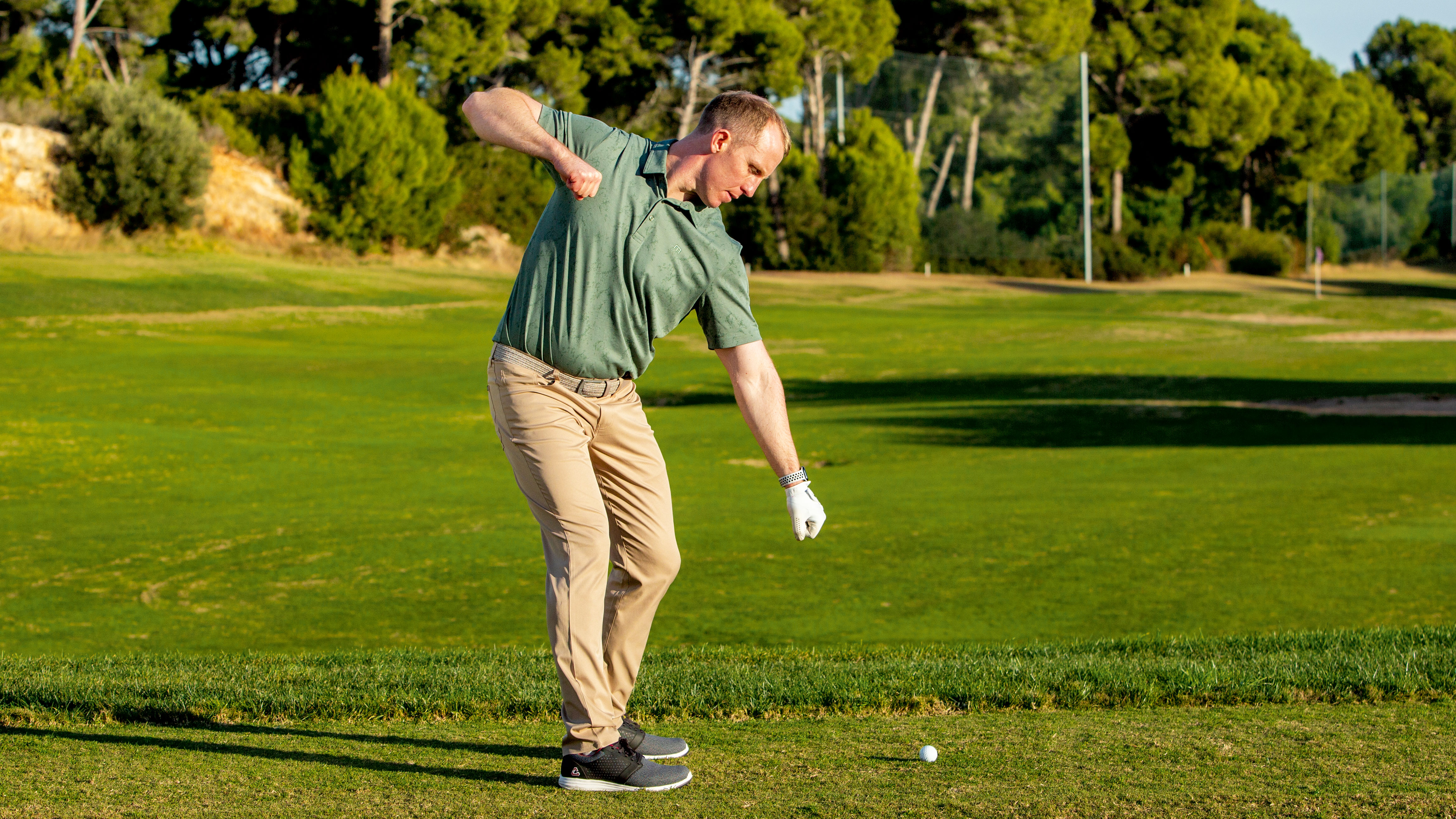
3. Arm Extension Drill
This drill is designed for those who have a tendency to overswing taking the club back. They don’t turn enough to support the movement of the club and, as a result, their arms start bending at the elbows, leading to the ugly position at the top. From here, you will potentially get a lot of what we call a ‘chicken wing’ on the way down and through impact. The club might even touch you on your right shoulder at the top of the swing. This is obviously a really narrow backswing and we desperately need to add some width.
Lose the club for a second and put your hands across your chest. I want you to make a really rotational backswing, focusing on keeping your hips and head reasonably centered. Then I want you to just stretch your arms away from you. Now you’ll see a very different position and it’s going to help you produce way more power in the downswing. From this really nice 10 o’clock position, you can swing on through to the finish.
Once you have perfected this backswing move without the club, you can then reintroduce it and do exactly the same thing. Now you have a wide arm structure in which your body has maximised its turn. Your arms have only really travelled a short distance, but have maintained a really wide position.
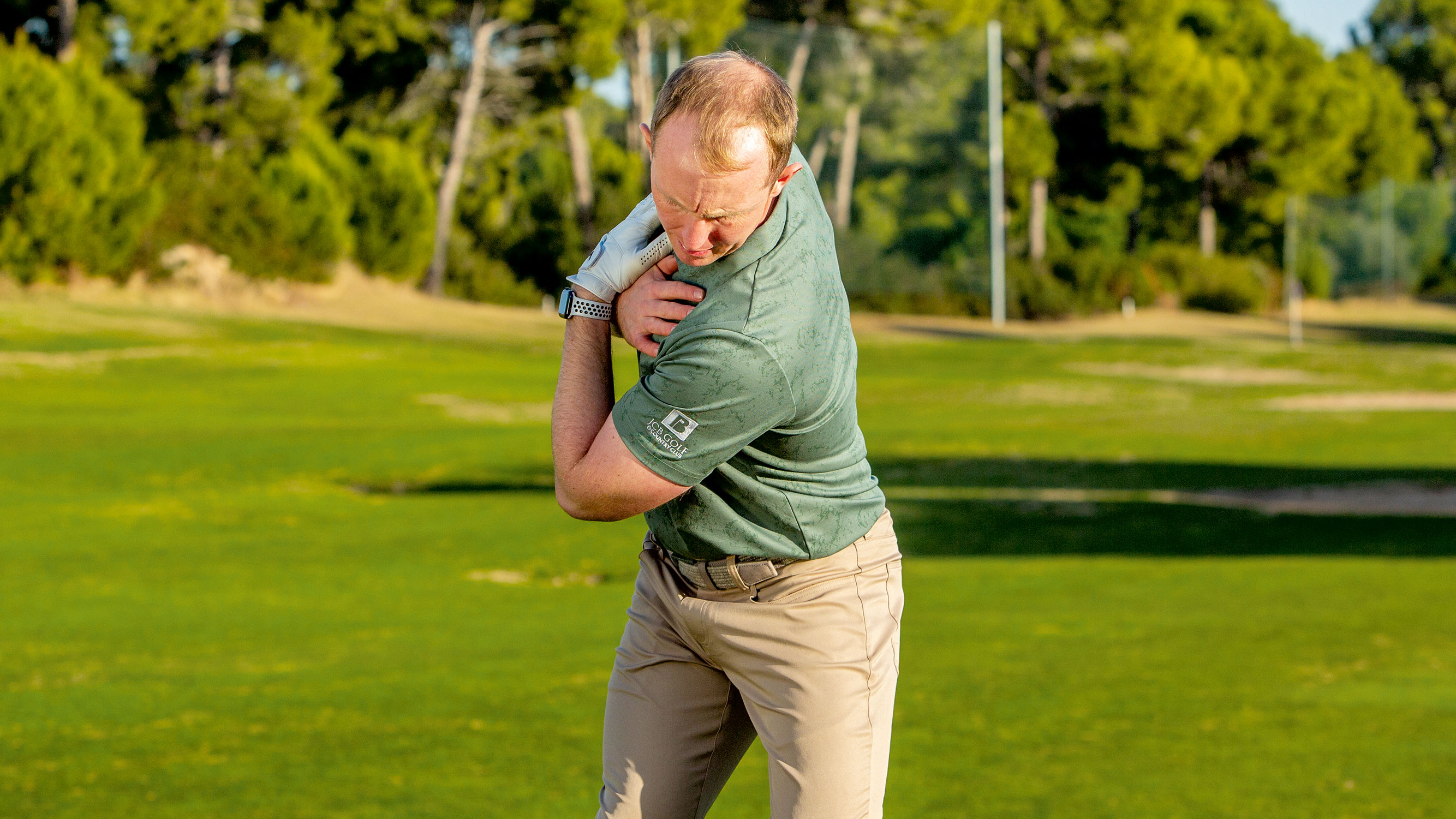
Joshua Mayo Backswing Hack
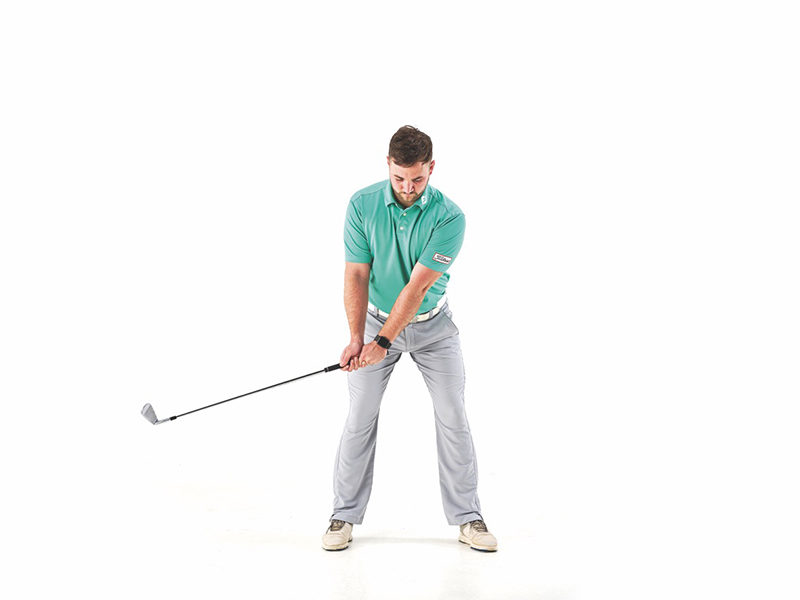
I like to feel as though my hands get the clubhead moving first. A good wrist set should be the priority. Start to create a 90 degree angle between the shaft and forearm as the hands gently begin to push the club away from the target.
The shoulders follow the hands, then the torso and finally the hips and lower body. Swing slowly to the top and stop. Have your shoulders turned 90 degrees so you’re looking over the lead shoulder? Have your hips turned around 45 degrees? If I were observing you, I’d want to see that the knees and feet haven’t turned much at all.
If the lower body goes at the same rate as the upper body, it’s hard to build up energy so you’ll be very limited on power and efficiency. Imagine a spring being wound up ready to be released. There’s also much more chance of swaying off the ball if the lower body gets too active early in the backswing.
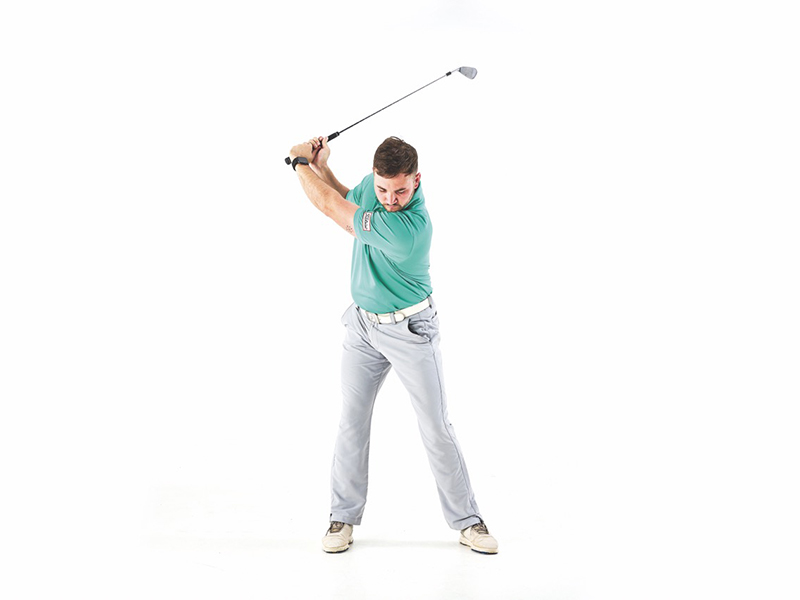
Bonus Hack - 'Tap' Into Your Full Potential
To prevent the lower body rotating too soon, try ‘isolating’ it by tapping a foot. Tapping the lead foot throughout the swing will help keep your lower body separated from the upper body.
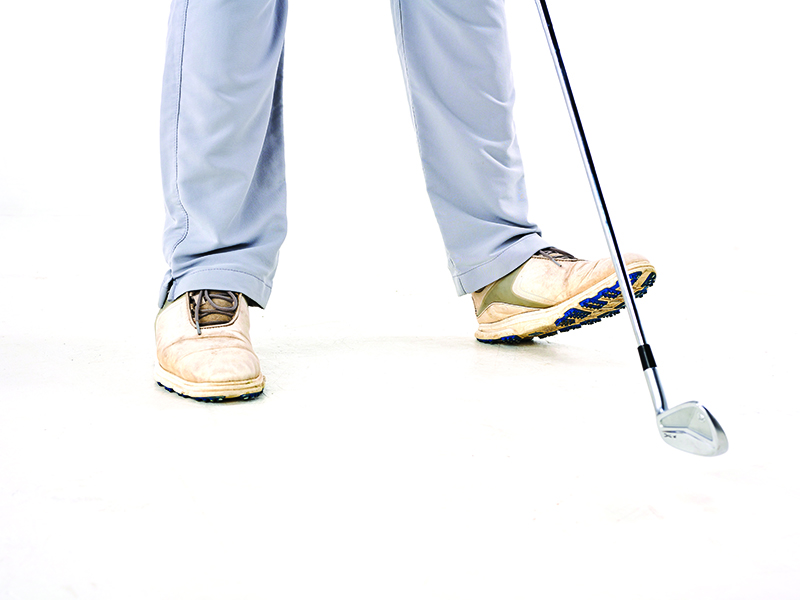
Work on starting the swing with the hands, then shoulders, then hips. You should get a full shoulder turn with much less hip turn. Give it a go – a rhythmical tap of the lead foot as you work to the top of the backswing and then give it a rip.
FAQs
Q: How Long Should Your Backswing Be?
A: It's easy to over-analyse the backswing, and many club golfers obsess over what is 'correct length'. In truth, there is no one-size-fits-all approach to the length of backswing. Just look at two of the best Johns (or Jons) - both Daly and Rahm wield their clubs to great effect with very different backswing profiles.





